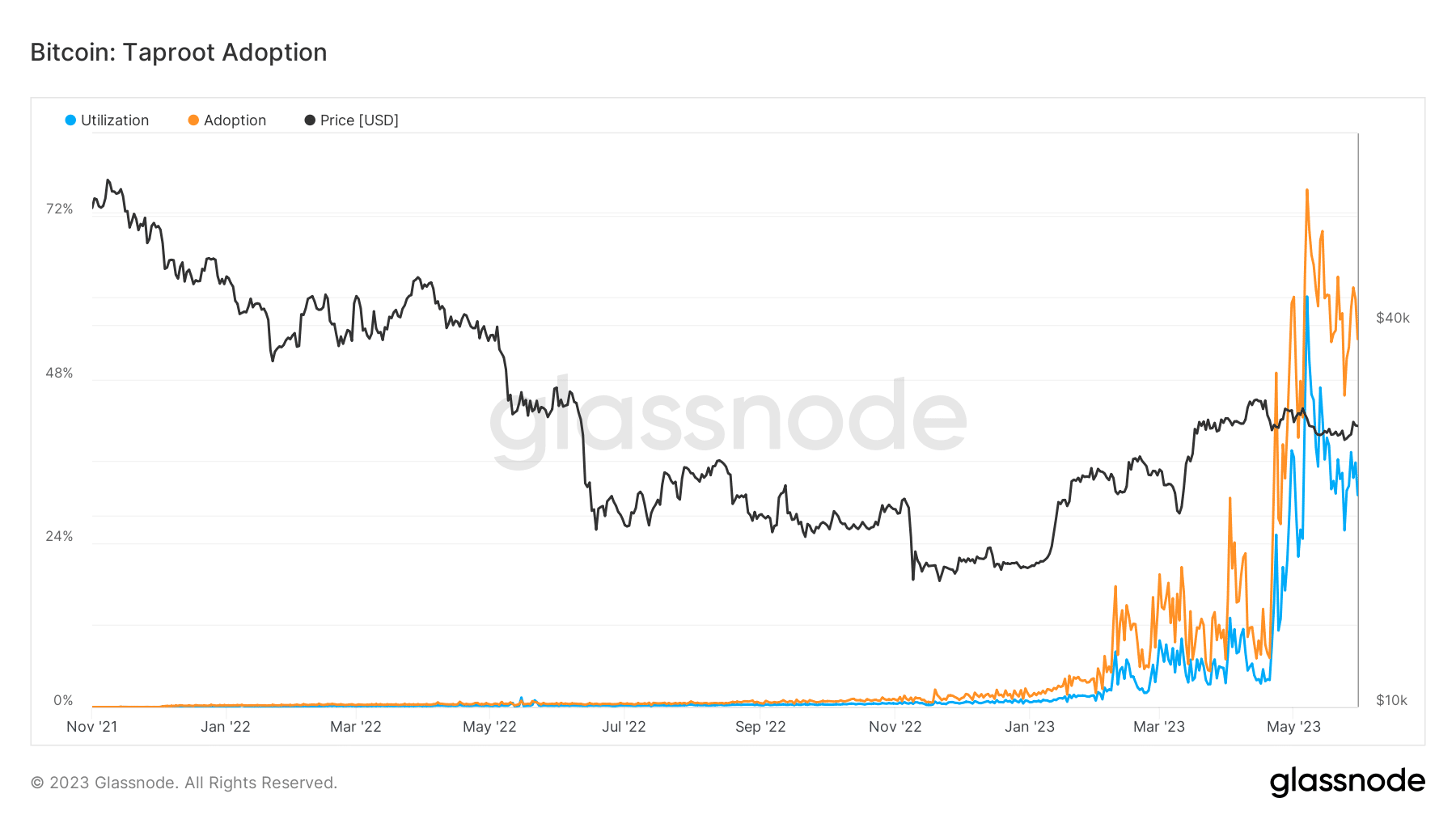Bitcoin: The ‘why’ and ‘how’ of Taproot driving adoption

The bull market of 2o23 has led to a sharp spike in network activity on Bitcoin’s [BTC] chain. The number of daily transactions and unique active addresses have grown steadily over the last four months, with May logging record-breaking traffic.
While the trend started with the minting of NFTs which had topped 10 million inscriptions at press time, the recent frenzy was driven by the bulk minting and trading of BRC-20 tokens. Interestingly, the technology powering the minting of both fungible and non-fungible tokens was Ordinals, made possible by the Taproot Protocol launched in November 2021.
Let’s get to the root of things
The Taproot Upgrade, which was envisioned as the long-awaited solution to many of Bitcoin’s conventional problems, has finally started to bear fruits. One of the most significant upgrades executed in the last few years, Taproot is meant to enhance the privacy, scalability, and utility of the first-generation blockchain network.
First and foremost, the Taproot upgrade batches and validates multiple signatures and transactions together, rather than individually. Prior to Taproot, verification of transactions is slow because each digital signature was validated against a public key. However, under the new system, for transactions that require sign-offs from multiple parties, signatures would be clubbed together as one signature is inputted and then fed to the receiver. This would result in less demand for block space and speed up operations.
Apart from scaling up the network, this process also solves Bitcoin’s privacy issues to a great extent. Under the conventional system, it is easier to distinguish between the different types of transactions supported on the network. For example, complex transactions involving multi-signature transactions would look different from a simple transaction of sending one BTC from one wallet to another, because of minor technical details embedded into each transaction.
Because of Taproot’s cryptography, all of these different transactions will look exactly the same, giving users more control over their transaction history.
Furthermore, the Taproot Upgrade encourages the implementation of smart contracts on the Bitcoin network, a space which has traditionally been dominated by networks like Ethereum [ETH], Cardano [ADA] and Solana [SOL]. Smart contracts help in unlocking one of the most powerful use cases for blockchain technology – Decentralized Finance (DeFi).
While Bitcoin always had smart contract capability, scaling constraints restricted its broader application. With the concerns addressed to a great degree by Taproot, the vision has started to come to fruition.
Taproot drives Bitcoin’s demand
Up until 2023, Bitcoin’s reputation was restricted to being a peer-to-peer (P2P) payments network with not much real-world utility apart from settling transactions on the chain. However, with the Taproot upgrade, it has started to position itself like other conventional layer-1 blockchains, enabling deployment of smart contracts on the chain and minting of NFTs and other fungible tokens.
A look at Glassnode’s adoption and utilization metrics revealed that 60% of all transactions on Bitcoin used Taproot on 1 May, the day when the overall transaction count hit its all-time high (ATH). The adoption rose further on 7 May, accounting for a massive 75% share of all transactions.
Retail investors jump in
A big criticism of Bitcoin since its inception has been its lack of utility which has deterred individual investors from actively participating in the network. While attributes such as ‘store of value’ and ‘hedge against uncertainty’ have attracted institutional investors, a technology does not truly become mainstream unless it is widely adopted. However, Taproot has brought a ray of hope.
Since the beginning of 2023, the percentage of retail investors, who hold less than 10 BTC, has grown significantly, in a sharp contrast to the stagnation seen during the bear market phase of 2022. This is a strong indicator of Bitcoin’ growing mainstream adoption.
Is your portfolio green? Check out the Bitcoin Profit Calculator
Bitcoin for NFTs
A year ago, nobody would have imagined that Bitcoin could become a favoured network for facilitating NFT transactions. However, the changes brought by Taproot have catapulted it to become the second-biggest blockchain for facilitating NFT transactions, eclipsing biggies like Solana and Polygon and trailing only Ethereum.
Over the last month, trades worth $191 million were settled on the chain, representing a whopping 438% growth, as per CryptoSlam.
Despite widespread support, Taproot adoption is projected to expand slowly over time. However, if it continues to open new use cases for Bitcoin, the cryptocurrency environment could undergo revolutionary transformation.









